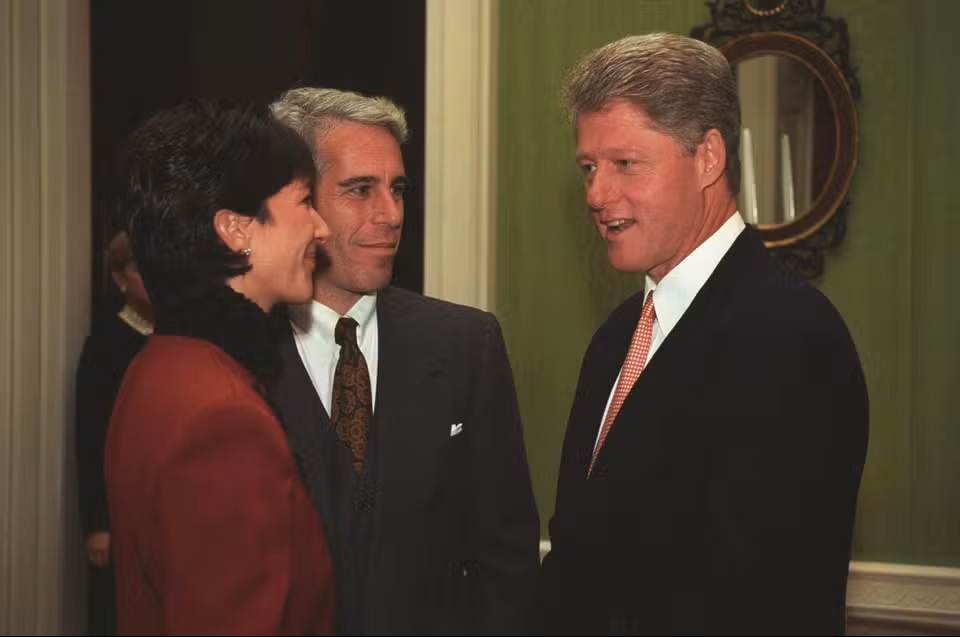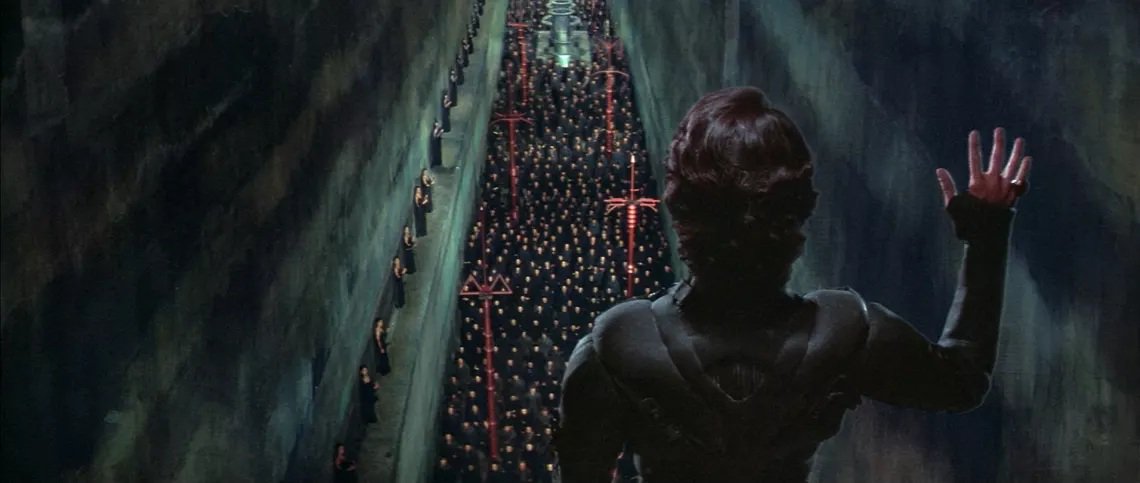
I know I keep on and on about Dune, but what can I do? I just watched an excellent retrospective review by Oliver Harper about David Lynch’s Dune and realised something out of the blue. That older movie is superior, even compared to Dune Part Two's riot of action and emotion, because it’s the perfect marriage of science with art.
By Emad Aysha
Here’s why, for starters. Harper explained that a planet like Dune, which has no water, can’t have blue skies, so they used an old-fashioned glass filter before the camera and shone a light on it. That way, you get a dusty, dusky, orangey sky that gives the world a desolate and downright alien look. That’s when I realised the problem with Dune part one: the grey ‘tinge’ to everything—the desaturation button left on overdrive.
The new movie fixed that, giving depth to the otherwise bland desert scape, with a lovely darkish colour at sunset and nice contrasts between shade and dark over desert dunes, but all at the expense of blue skies.
It still looked too much like Earth, as if somebody polished the sand particles with a hanky, leaving the place like the Emirates or a beach party in California. It is picturesque but not alien, foreboding, or epic. Technology and the overdependence on digital cameras and CGI effects seem to be the key.
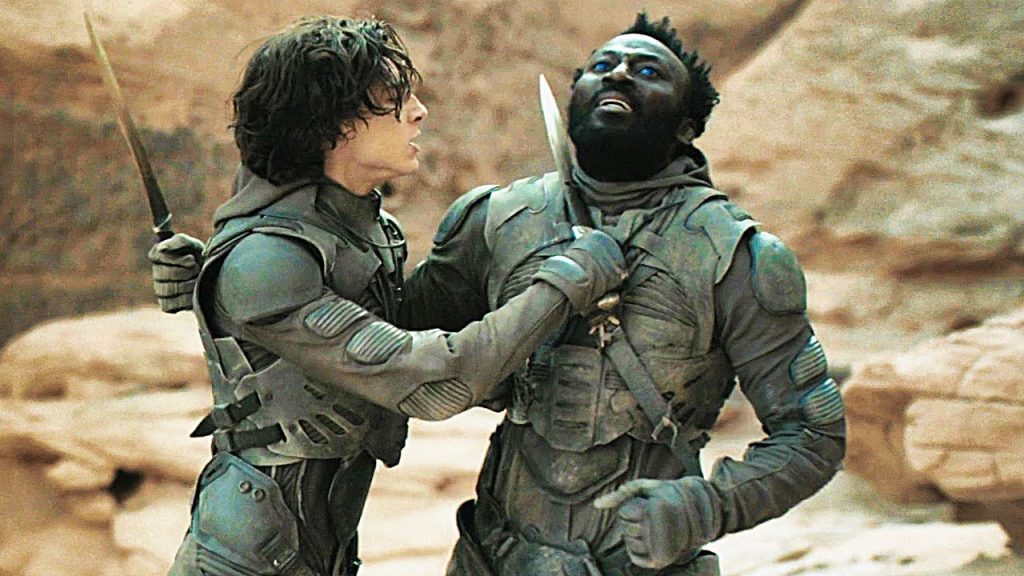
DESERT BLUES: One of the stupidest scenes in cinema history. Scuba gear in the desert, with one opponent trying to yell down the other!
In all fairness to Denis Villeneuve, not that there’s any reason to be fair, this seems to be an endemic problem across the board everywhere in sci-fi movieland. We saw this with the Star Wars prequels, with a terrible Yoda puppet in Phantom Menace and rooms, people, and props that look fake even when they aren’t, thanks to digital cameras and last-minute image touch-ups with computers.
Computers have led to a systematic deskilling in the ranks of special effects. And it’s not just computers. It’s also organisation, either too centralised or too decentralised. I watched a ‘long’ documentary featurette about Ridley Scott’s Prometheus and wondered what went wrong compared to the classic Alien (1979). Then I watched an older documentary about the making of Alien, and I found the answer.
The doors in Prometheus all looked the same, whereas Ron Cobb (who wasn’t rehired for some reason) insisted on making all of his doors onboard the Nostromo different for fun. He had a scientific excuse for each, but it was more a pet aesthetic peeve of his that still worked wonders with the audience's imagination—the marriage of realism and beauty.
Take another look at the Dunes of today and yesteryear. The scene where Paul, aka Timothée Chalamet, makes his fiery speech to the millions he has amassed is fantastic. Nonetheless, the equivalent scene in the older movie is better.
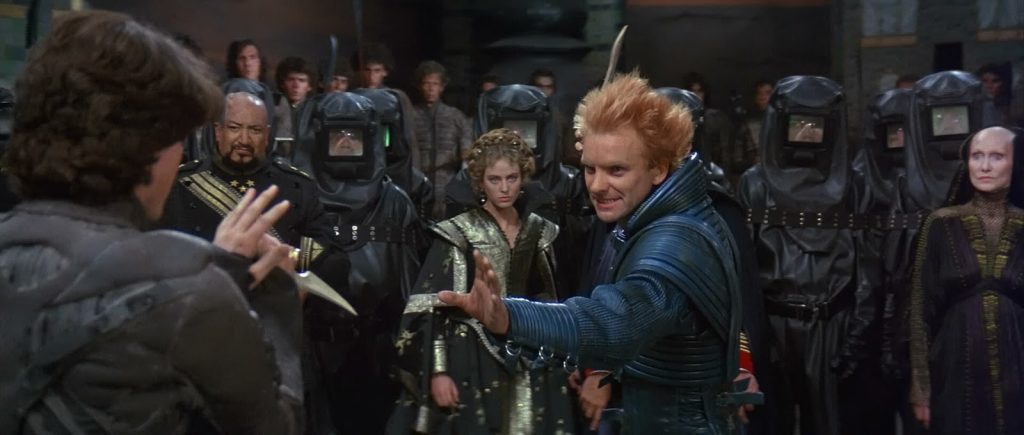
TEACHER'S PET: The crowd's may be decked in boiler suits, but the scene is still sizzling.
Paul is underground, astride an incredibly long hallway that seems to go on forever, and it’s jam-packed with holy warriors carrying banners. It’s even more impressive because you’re saying to yourself – this is all underground, and all etched in straight lines out of the recalcitrant rock.
They’re not out in the open. The colours are also better. In the Villeneuve epic, everything is the same dull shade of brown or grey. In Lynch’s movie (I suspect Raffaella De Laurentiis is more responsible), you have black, grey, and red on the inside. Black and grey are cool colours, conveying that these underground or indoor places are refuges from the burning inferno outside. The little blotches of red remind you of that inferno and add colour to something that would otherwise be drab.
Again, realism and aesthetic considerations. Villeneuve instead carries the boredom of the outside world inside, which is the opposite of what we do as Arabs and Mediterranean people and what happens in the novel. (Raffaella is an Italian, so she knows her stuff, so to speak).
Not to mention the gold, blue, and bluish green tiles and patterns in the palace at the end of the movie, which are very Islamic and Mediterranean in style, compared to the parched, aquiline blandness of the postmodern hellhole in the new film.
Not to discount acting. Paul in the new movie does his rabble-rousing with a lot of passion, while Kyle MacLachlan speaks softly, quietly, and slowly—evidence of a lack of confidence. This is the first time he’s done anything like this.
All that responsibility weighing on his shoulders makes perfect sense to me. In contrast, a certifiable wuss like Chalamet suddenly becomes a charismatic speaker at a mosh pit full of metal heads. It simply doesn’t add up!
Later, Kyle’s character becomes more confident, evident in his speeches. Something is seriously wrong among the moviemakers. Conflicting signals and agendas between the director and his ego, the studio system with its jaundiced leftist politics, and I suspect also Brian Herbert, not content with the mess he made with his prequel novels.
Say what you want about the Lynch production, with all its controversies. Still, it epitomises streamlined writing, narrating, producing, and special effects governed by artistic and scientific considerations.
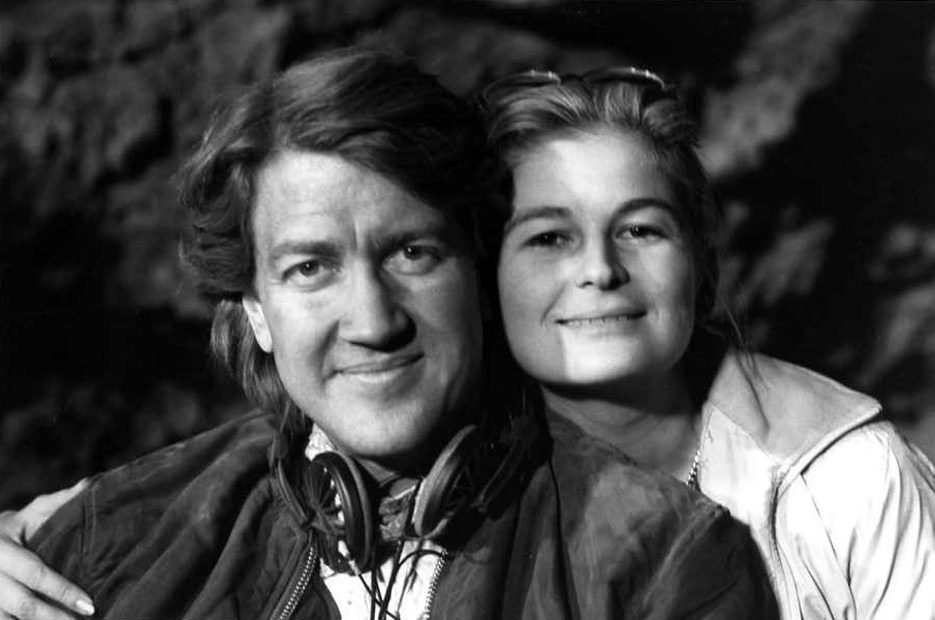
DINO BOTS: Raffaella, the mother-figure David Lynch (RIP) needed to complete the job?
I look forward to Dune Messiah, but they still have much to do to reverse Hollywood's decline in the postmodern era of lazy digital cannibalism!





